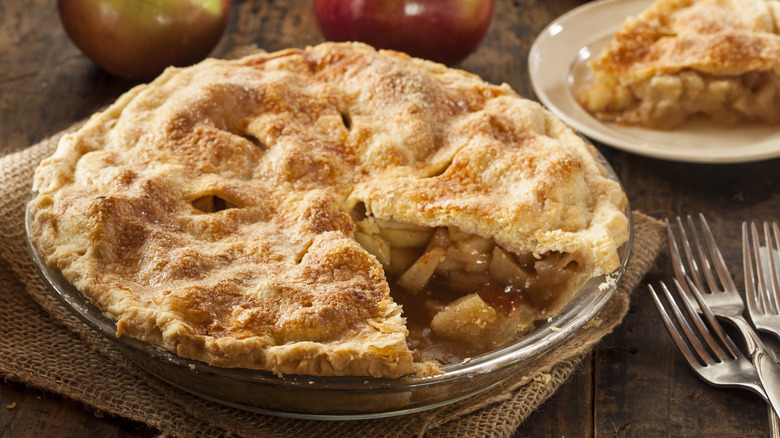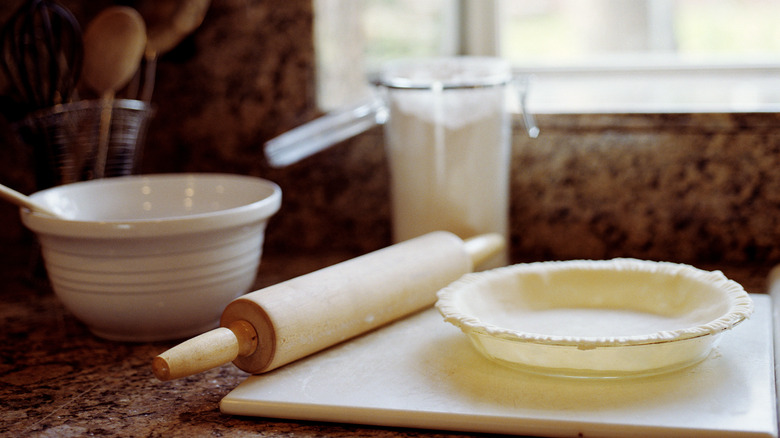The Simple Butter Trick To Take Flaky Crusts To The Next Level
Despite the fact that a pie crust recipe includes only three ingredients, it's easy to get wrong. For starters, you may let your dough get too warm as you mix the flour, water, and fat together. Professional baker Zoe Denenberg recommends that if you're using butter, that you make sure it stays frozen; You don't want your butter to melt away before it can be baked into your crust (via Southern Living).
Land O' Lakes adds that you need to be just as cautious about how much water you're adding to your dough mixture. One of the big challenges with pie dough is that the experience is different every time, so it's always best to start with less water than you'll end up needing. If your recipe has a suggested range, start with the lowest recommended amount and add more water from there. This is true for lard-based crusts and butter-based crusts.
But professional bakers recommend that, especially for fruit pies, to use butter as your fat instead of lard. Despite the fact that butter can be temperamental to work with, it's what helps make pie crusts especially light and flaky.
Do this with your butter for the best flaky pie crust
When you're making pie crust for fruit pies, you'll want to use butter instead of lard to make sure you get a flaky, rather than a mealy, crust (via Food 52). Flaky pie crusts made with butter will absorb more moisture than a mealy crust, ensuring you won't end up with a soggy, leaky pie. As we mentioned, though, butter can be a diva ingredient: It needs to be handled in a specific way to get your desired results.
For instance, if you work the dough of your butter crust too much, as baker Zoe Denenberg explains for Southern Living, this can create a mealy crust and the exact opposite of what you want. Denenberg warns to avoid the temptation of wanting to create a nice, neat ball of dough. You should still have chunks of butter visible for the best flaky pie crust.
Before you roll your dough out, but after it's been blended, Serious Eats suggests letting your dough chill for at least another half hour. This allows the dough not only to re-chill, but it also allows your dough to fully hydrate.
But if you want to up your pie crust game, Food and Wine recommends tossing chilled chunks of butter into your flour, and then pinching the chunks flat before mixing it with the rest of the dough's ingredients. You should end up with an extra-flaky crust when you're done baking.

